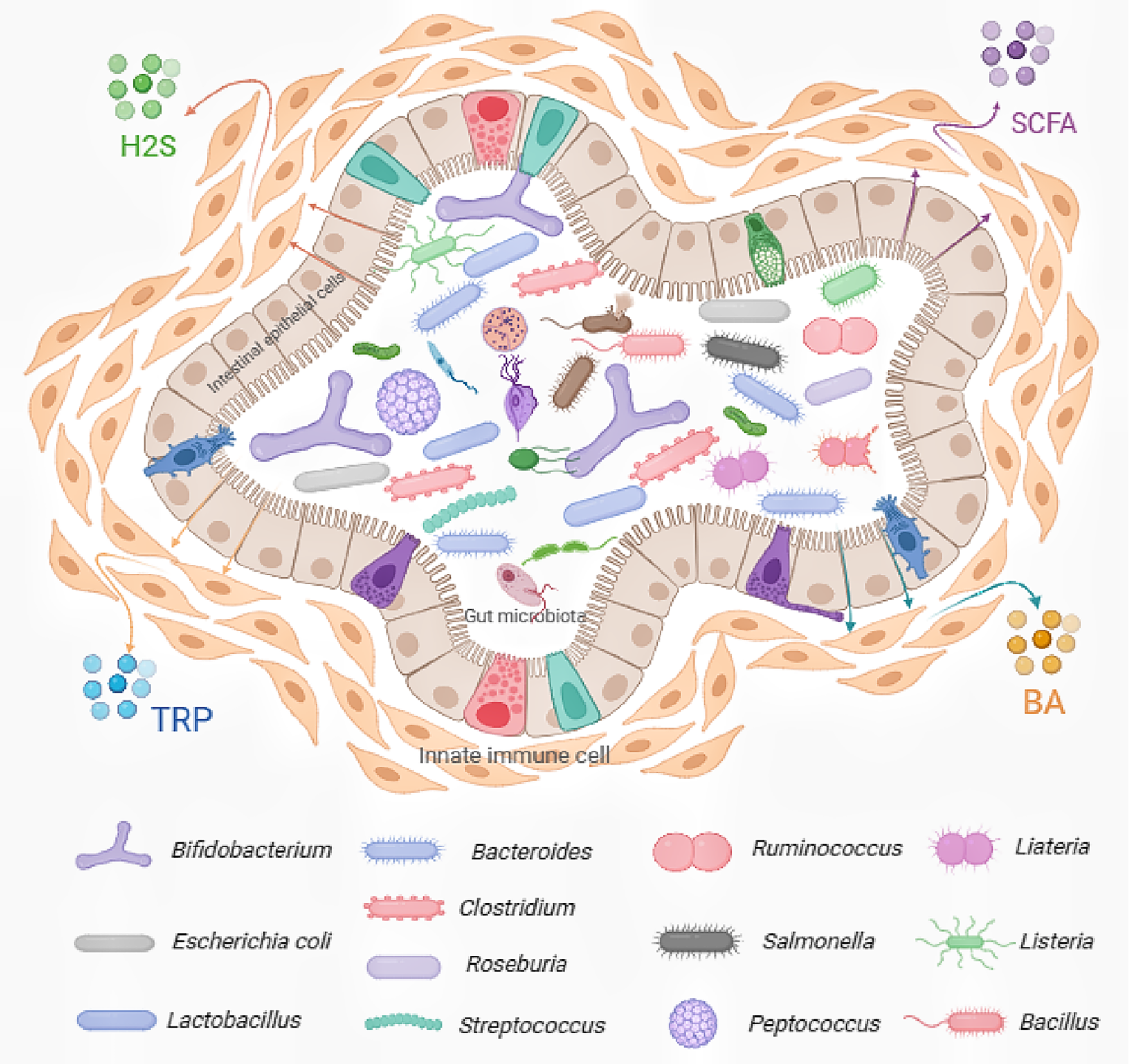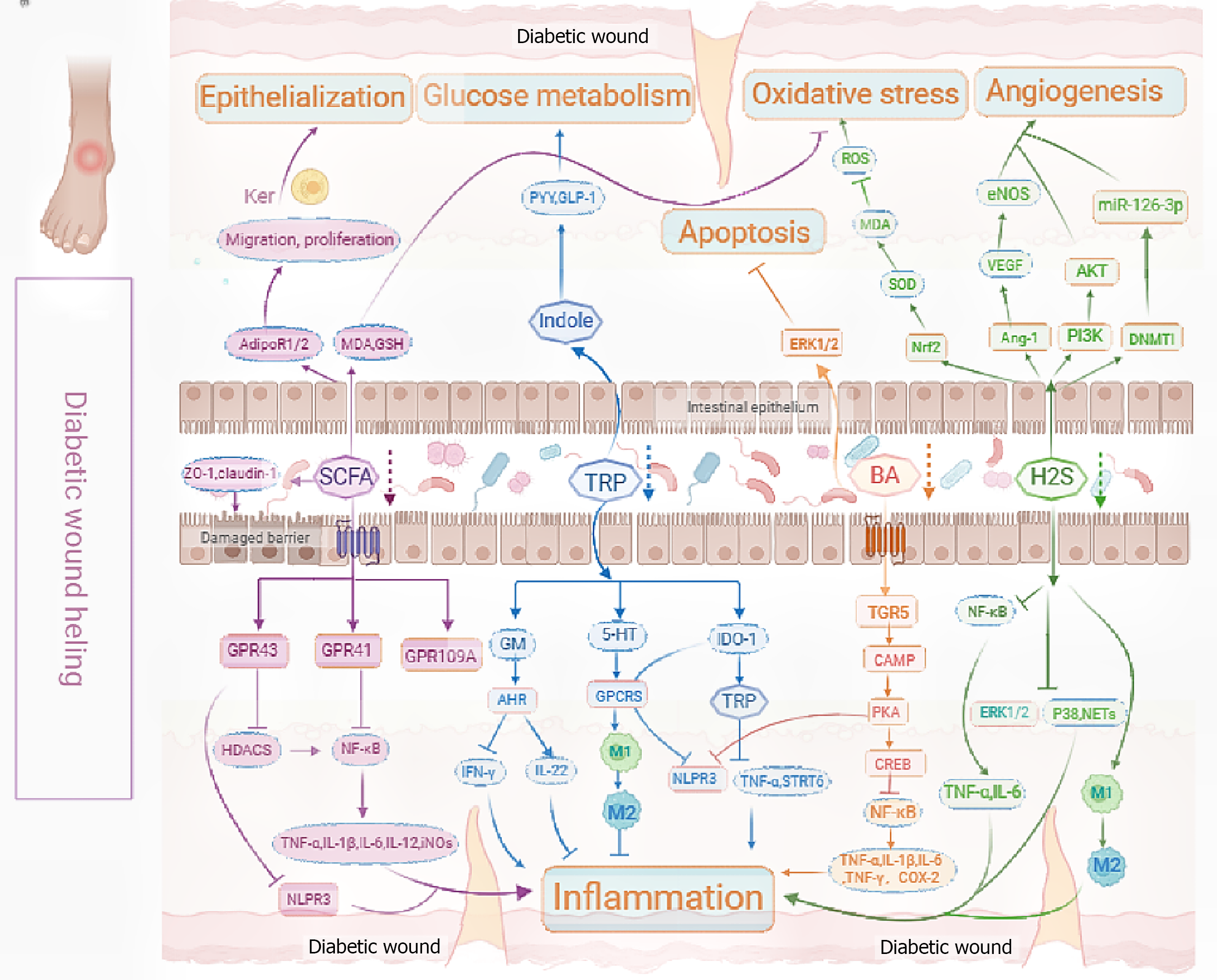Copyright
©The Author(s) 2025.
World J Diabetes. May 15, 2025; 16(5): 98788
Published online May 15, 2025. doi: 10.4239/wjd.v16.i5.98788
Published online May 15, 2025. doi: 10.4239/wjd.v16.i5.98788
Figure 1 Gut microbiota and its associated metabolites like short chain fatty acids, hydrogen sulfide, tryptophan, and bile acids.
SCFA: Short chain fatty acids; BA: Bile acids; TRP: Tryptophan; H2S: Hydrogen sulfide. This figure was created using BioRender.com.
Figure 2 Metabolites regulate the healing of diabetic wounds through various pathways.
The metabolites such as chain fatty acids, hydrogen sulfide, tryptophan, and bile acids mediated by gut microbiota (GM) have a positive regulatory ability on the inhibiting inflammation and apoptosis, reducing oxidative stress, regulating blood glucose levels and promoting reepithelialization and angiogenesis. While the type 2 diabetes mellitus patients are accompanied by intestinal microbiota disorders and an increased intestinal permeability, which will cause the down-regulation of GM metabolites entering the circulatory system, and may eventually further aggravate diabetes wounds. SCFA: Short chain fatty acids; BA: Bile acids; TRP: Tryptophan; ZO-1: Zonula Occludens-1; HDACs: Histone deacetylases; MDA: Malondialdehyde; GSH: Glutathione; GM: Gut microbiota; 5-HT: 5-hydroxytryptamine; M1: M1 macrophages; M2: M2 macrophages; IDO: Indoleamine 2:3-dioxygenase; PYY: Peptide YY; GLP-1: Glucagon-like peptide-1; SOD: Superoxide dismutase; ROS: Reactive oxygen species; Ang-1: Angiopoietin-1; VEGF: Vascular endothelial growth factor; eNOS: Endothelial nitric oxide synthase; AKT: Protein Kinase B; DNMT1: DNA methyltransferase 1; NETs: Neutrophil extracellular traps; H2S: Hydrogen sulfide. This figure was created using BioRender.com.
- Citation: Xiong L, Huang YX, Mao L, Xu Y, Deng YQ. Targeting gut microbiota and its associated metabolites as a potential strategy for promoting would healing in diabetes. World J Diabetes 2025; 16(5): 98788
- URL: https://www.wjgnet.com/1948-9358/full/v16/i5/98788.htm
- DOI: https://dx.doi.org/10.4239/wjd.v16.i5.98788










